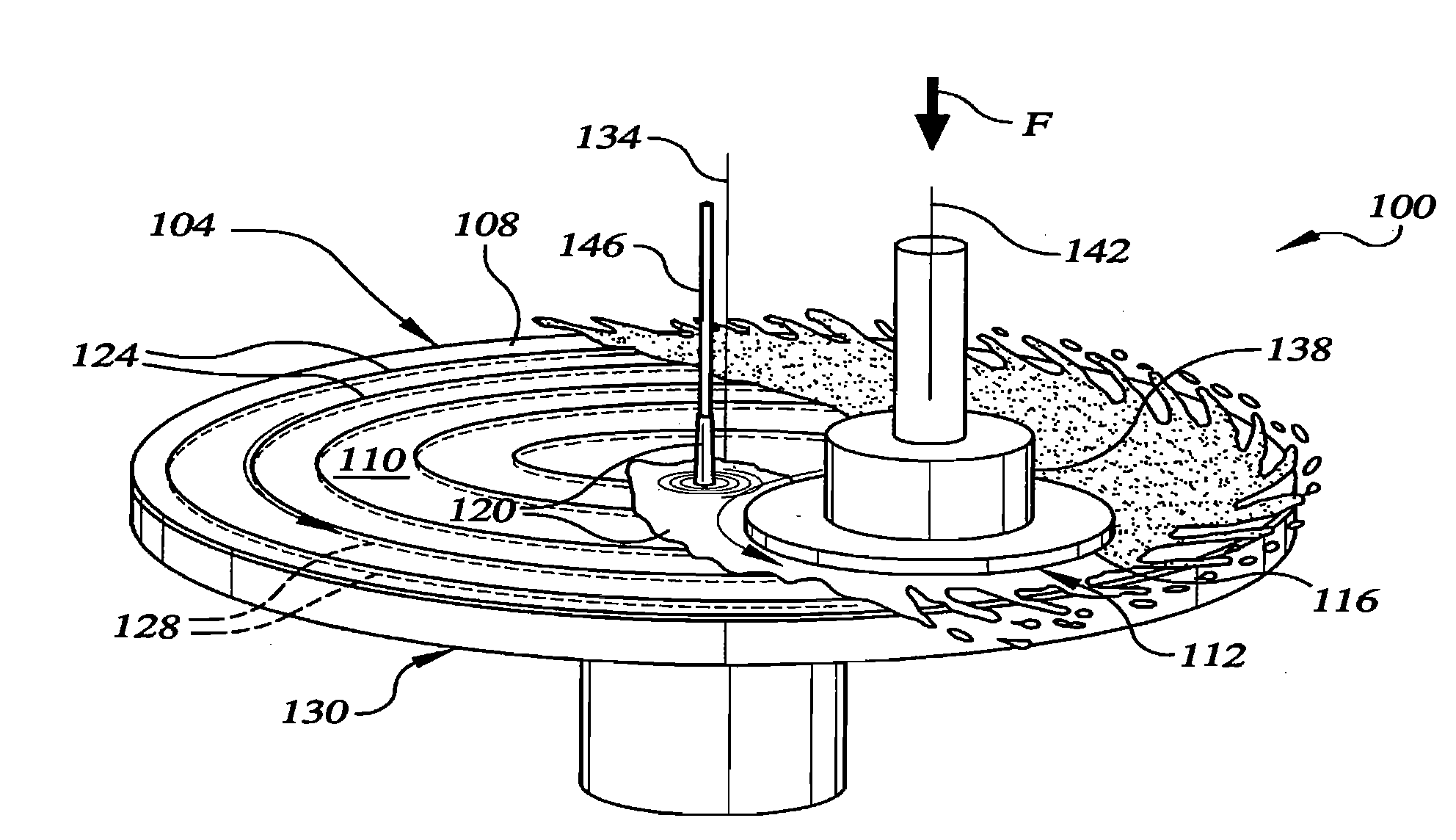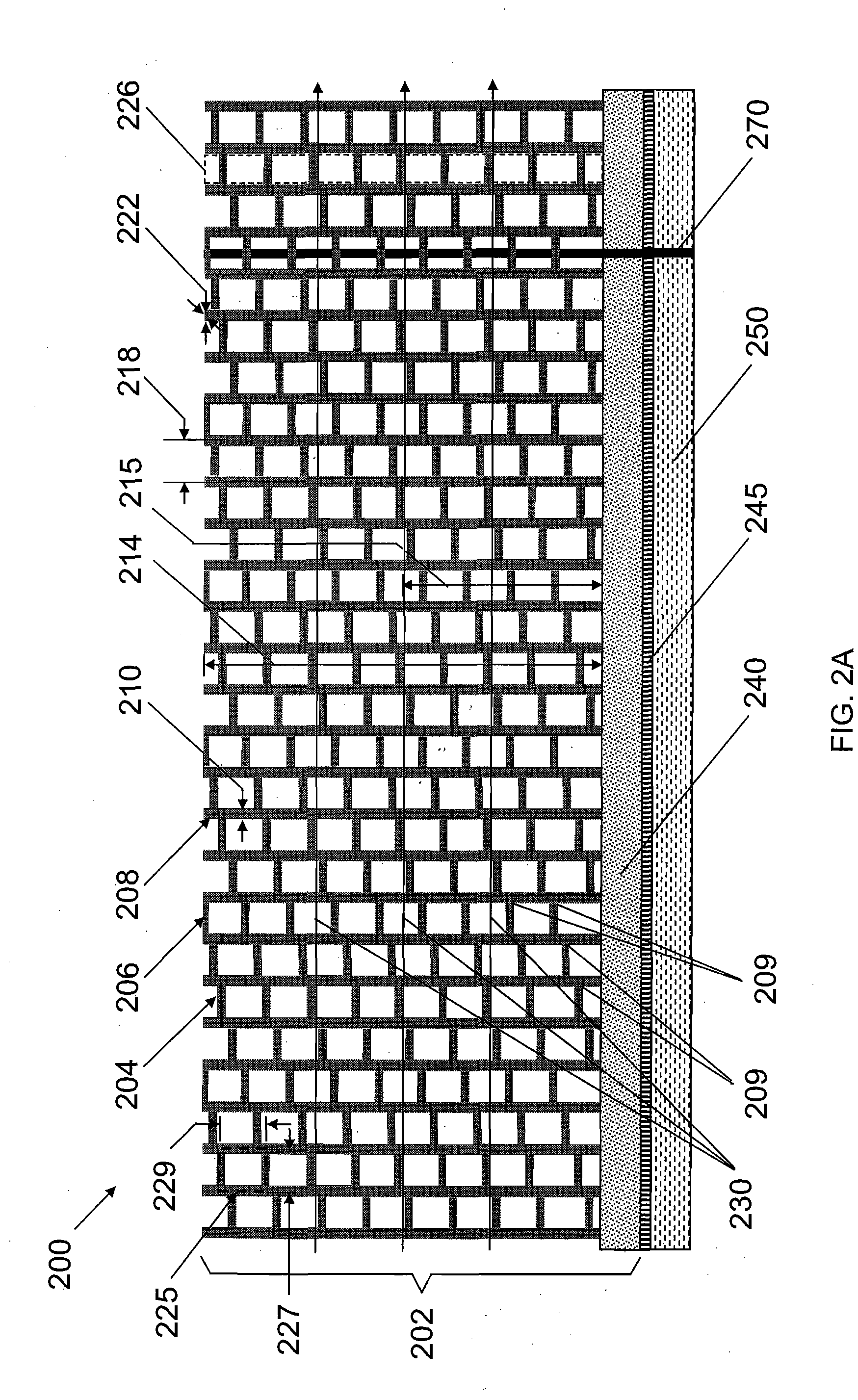Three-dimensional network for chemical mechanical polishing
a three-dimensional network and mechanical polishing technology, applied in the field of polishing pads, can solve the problems of reducing the polishing rate of the cmp process, clogging of surface voids, and non-uniform polishing between wafers or within wafers, so as to reduce or eliminate the need for re-texturing, improve the effect of real contact area and good planarization efficiency
- Summary
- Abstract
- Description
- Claims
- Application Information
AI Technical Summary
Benefits of technology
Problems solved by technology
Method used
Image
Examples
Embodiment Construction
[0023]Referring to the drawings, FIG. 1 generally illustrates the primary features of a dual-axis chemical mechanical polishing (CMP) polisher 100 suitable for use with a polishing pad 104 of the present invention. Polishing pad 104 generally includes a polishing layer 108 having a polishing surface 110 for confronting an article, such as semiconductor wafer 112 (processed or unprocessed) or other workpiece, e.g., glass, flat panel display or magnetic information storage disk, among others, so as to effect polishing of the polished surface 116 of the workpiece in the presence of a polishing medium 120. Polishing medium 120 travels through optional spiral groove 124 having a depth 128. For the sake of convenience, the term “wafer” is used below without the loss of generality. In addition, as used in this specification, including the claims, the term “polishing medium” includes particle-containing polishing solutions and non-particle-containing solutions, such as abrasive-free and rea...
PUM
| Property | Measurement | Unit |
|---|---|---|
| pressure | aaaaa | aaaaa |
| pressure | aaaaa | aaaaa |
| pressure | aaaaa | aaaaa |
Abstract
Description
Claims
Application Information
 Login to View More
Login to View More - R&D
- Intellectual Property
- Life Sciences
- Materials
- Tech Scout
- Unparalleled Data Quality
- Higher Quality Content
- 60% Fewer Hallucinations
Browse by: Latest US Patents, China's latest patents, Technical Efficacy Thesaurus, Application Domain, Technology Topic, Popular Technical Reports.
© 2025 PatSnap. All rights reserved.Legal|Privacy policy|Modern Slavery Act Transparency Statement|Sitemap|About US| Contact US: help@patsnap.com



